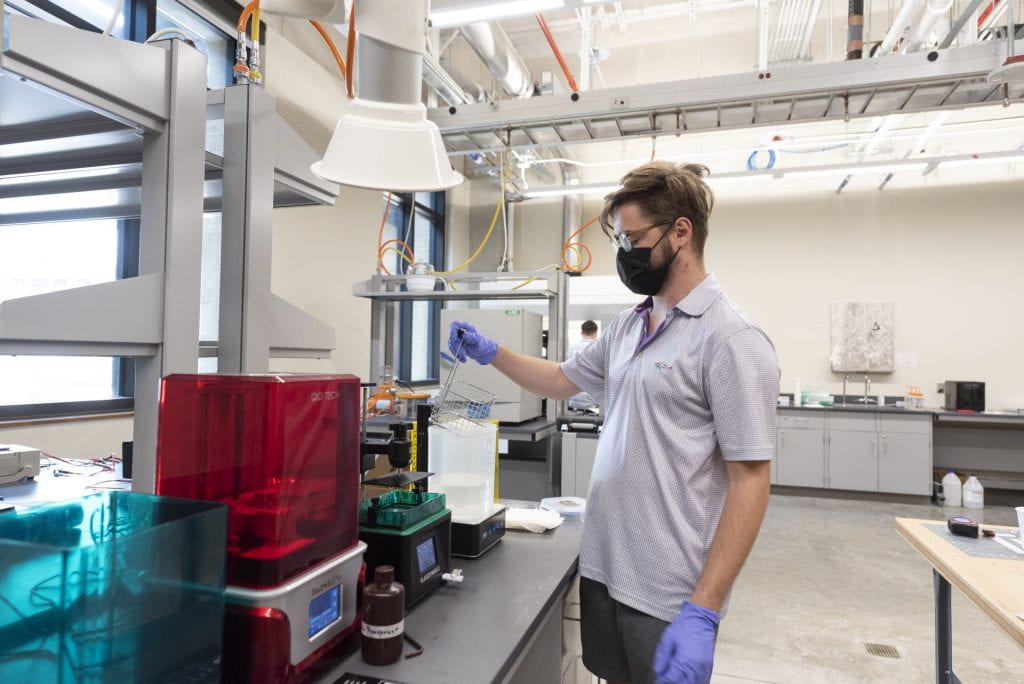
Recent advancement in Additive Manufacturing (AM) has made this technology more affordable and accessible for a wide range of industries [1-4]. Fused Filament Fabrication (FFF) is the lowest cost AM process [5] rapidly expanding among manufacturers and getting more attention due to its wide availability and simplicity. Despite many advantages of FFF, it has also several limitations [6, 7]. One of the major challenges is to determine the manufacturing parameters that guarantee the quality requirements of various applications. Several researchers have investigated the effect of some process parameters on dimensional accuracy [8-10], surface finish [11], or mechanical properties of 3D printed parts [12-14]. However, there is still no solution for the major limitation of FFF, which is mechanical anisotropy and weakness in the direction normal to the interface between 3D printed layers (Z-direction) [14-16]. Thus, this anisotropy must be minimized to enhance the performance of 3D printed products.
The main objective of the current study is to optimize process parameters of FFF using numerical simulation to maximize mechanical properties in the Z-direction. For this purpose, first, some of the controllable process parameters, such as extruding temperature and printing speed, will be considered as the design variables. Next, the relationship between these variables and the mechanical properties, such as strength, stiffness, and strain at fracture in the Z-direction of the 3D printed specimen, will be established using the Finite Element (FE) method. The FE model will be validated by tensile test results. Then, non-derivative optimization methods will be used along with the FE modeling to seek the optimum set of process parameters to achieve maximum mechanical performance. Finally, samples with the optimum set of process parameters will be 3D printed and tested against randomly 3D printed samples.
Dr. Emami leads this project.
[1] P. Gu and L. Li, “Fabrication of biomedical prototypes with locally controlled properties using FDM,” CIRP Annals, vol. 51, pp. 181-184, 2002.
[2] M. Centola, A. Rainer, C. Spadaccio, S. De Porcellinis, J. Genovese, and M. Trombetta, “Combining electrospinning and fused deposition modeling for the fabrication of a hybrid vascular graft,” Biofabrication, vol. 2, p. 014102, 2010.
[3] F. Ning, W. Cong, J. Qiu, J. Wei, and S. Wang, “Additive manufacturing of carbon fiber reinforced thermoplastic composites using fused deposition modeling,” Composites Part B: Engineering, vol. 80, pp. 369-378, 2015.
[4] H. L. Tekinalp, V. Kunc, G. M. Velez-Garcia, C. E. Duty, L. J. Love, A. K. Naskar, et al., “Highly oriented carbon fiber–polymer composites via additive manufacturing,” Composites Science and Technology, vol. 105, pp. 144-150, 2014.
[5] B. Barmore, “Fused Filament Fabrication of Filled Polymers for Metal Additive Manufacturing,” 2016.
[6] T. D. Ngo, A. Kashani, G. Imbalzano, K. T. Nguyen, and D. Hui, “Additive manufacturing (3D printing): A review of materials, methods, applications and challenges,” Composites Part B: Engineering, vol. 143, pp. 172-196, 2018.
[7] W. Oropallo and L. A. Piegl, “Ten challenges in 3D printing,” Engineering with Computers, vol. 32, pp. 135-148, 2016.
[8] Z. Moza, K. Kitsakis, J. Kechagias, and N. Mastorakis, “Optimizing dimensional accuracy of fused filament fabrication using Taguchi design,” in Proceedings of the 14th International Conference on Instrumentation, Measurement, Circuits and Systems (IMCAS-14), Salerno, Italy, 2015, pp. 27-29.
[9] S. Deswal, R. Narang, and D. Chhabra, “Modeling and parametric optimization of FDM 3D printing process using hybrid techniques for enhancing dimensional preciseness,” International Journal on Interactive Design and Manufacturing (IJIDeM), vol. 13, pp. 1197-1214, 2019.
[10] P. Nath, J. D. Olson, S. Mahadevan, and Y.-T. T. Lee, “Optimization of fused filament fabrication process parameters under uncertainty to maximize part geometry accuracy,” Additive Manufacturing, p. 101331, 2020.
[11] R. Udroiu and A. Nedelcu, “Optimization of additive manufacturing processes focused on 3D Printing,” Rapid Prototyping Technology—Principles and Functional Requirements; Hoque, ME, Ed, pp. 1-28, 2011.
[12] O. Es-Said, J. Foyos, R. Noorani, M. Mendelson, R. Marloth, and B. Pregger, “Effect of layer orientation on mechanical properties of rapid prototyped samples,” Materials and Manufacturing Processes, vol. 15, pp. 107-122, 2000.
[13] D. Yadav, D. Chhabra, R. K. Garg, A. Ahlawat, and A. Phogat, “Optimization of FDM 3D printing process parameters for multi-material using artificial neural network,” Materials Today: Proceedings, vol. 21, pp. 1583-1591, 2020.
[14] A. K. Sood, R. K. Ohdar, and S. S. Mahapatra, “Parametric appraisal of mechanical property of fused deposition modelling processed parts,” Materials & Design, vol. 31, pp. 287-295, 2010.
[15] R. Zou, Y. Xia, S. Liu, P. Hu, W. Hou, Q. Hu, et al., “Isotropic and anisotropic elasticity and yielding of 3D printed material,” Composites Part B: Engineering, vol. 99, pp. 506-513, 2016.
[16] J. Allum, A. Moetazedian, A. Gleadall, and V. V. Silberschmidt, “Interlayer bonding has bulk-material strength in extrusion additive manufacturing: New understanding of anisotropy,” Additive Manufacturing, p. 101297, 2020.